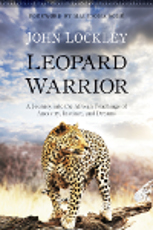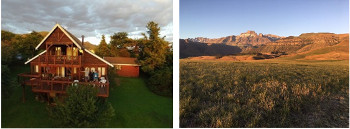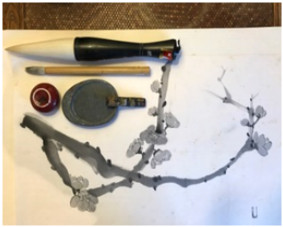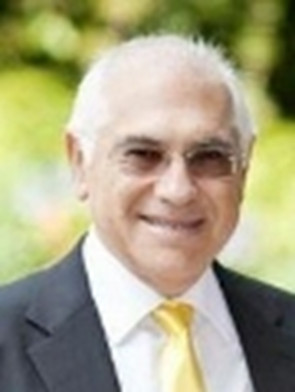“Bodhi Is Light” - A Documentary Film Celebrating The BRC

The evocative documentary on the BRC “Bodhi Is Light” - Impressions of the BRC - has just been released by the renowned film maker, Richard Pakleppa.

The evocative documentary on the BRC “Bodhi Is Light” - Impressions of the BRC - has just been released by the renowned film maker, Richard Pakleppa.
Office hours:
Weekdays: 08:00 to 1200 and 14:00 to 16:00:
Saturdays: 08:00 to 09:00 and 13:00 to 14:00
Sundays: 08:00 to 14:00
Email: (preferred communication)
BRC Mobile Numbers:
066 395 4682
082 579 3037
BRC Emergency mobile number:
082 741 7901
Durban mobile number:
082 466 8306 (Chrisi)
Physical address: D64, Nirodha Farm, Ixopo, 3276
GPS coordinates: 30°06'15.4"S 30°02'46.6"E OR 30.10436S 30.04625E
![]() Follow us on Facebook & Instagram
Follow us on Facebook & Instagram
Durban/PMB/Ixopo:
Hadley: 066 207 1985
| www.hwshuttleservices.co.za
30°06'15.4"S 30°02'46.6"E 30.10436S 30.04625E Traveling on the N3 towards Pietermaritzburg, take exit 61 for R603 toward Umbumbulu/Umlaas Road · Keep left at the fork, follow signs for Umbumbulu/R603/Umlaas Road · Continue to follow R603 - 18 km · Turn right onto R624 · Continue on R624 for approx 26km and at T-junction turn left onto R56 · Follow R56 towards Ixopo · Turn right at Buddhist Retreat sign, onto gravel road · Continue for 10km, Buddhist Retreat Centre will be on your right. Traveling on the N3, skirting Pietermaritzburg, carry on towards Durban on the N3, Take exit 61 for R603 toward Umbumbulu/Umlaas Road · Keep left at the fork, follow signs for Umbumbulu/R603/Umlaas Road · Continue to follow R603 - 18 km · Turn right onto R624 · Continue on R624 for approx 26km and at T-junction turn left onto R56 · Follow R56 towards Ixopo · Turn right at Buddhist Retreat sign, onto gravel road · Continue for 10km, Buddhist Retreat Centre will be on your right. At Park Rynie, turn off the N2, heading inland on the R612 to Umzinto/Ixopo. At the junction with the R56, turn right towards Richmond/Pietermaritzburg. After 5 km turn left onto D64 at a sign that says: Buddhist Retreat. After 7 km you will find the BRC entrance sign on your right. The Retreat Centre is well sign-posted. It can be found off District Road D64 which branches off the R56 between Pietermaritzburg and Ixopo, 5 km from Ixopo. At this turn-off there is a sign saying "Buddhist Retreat". Coming from Pietermaritzburg, just before the D64 turnoff, one passes the Mariathal Mission close to the road, on the left. Please ensure that you arrive before dark - arrivals are encouraged between 3 & 5pm on retreat days.
The Retreat Centre is well sign-posted. It can be found off District Road D64 which branches off the R56 between Pietermaritzburg and Ixopo, 5 km from Ixopo. At this turn-off there is a sign saying "Buddhist Retreat". Coming from Pietermaritzburg, just before the D64 turnoff, one passes the Mariathal Mission close to the road, on the left. Please ensure that you arrive before dark - arrivals are encouraged between 3 & 5pm on retreat days.GPS coordinates
From Durban:
From Gauteng:
From The South Coast:

This unique artwork has been created by illustrator and nature book author Duncan Butchart whose 'African Journey Collection' of poster-prints are in the style of the popular vintage travel posters of the 40’s and 50’s.
Butchart has travelled widely and carried out ecotourism assignments in eleven African countries. His poster-prints including Kruger, Cape Town, Okavango and Drakensberg can be seen here: dbnatureworks.com
As a boy, Duncan was entranced by the ‘Adventures of Tintin’ picture books created by the legendary Belgian cartoonist Hergé, and has used that distinctive ‘ligné clair’ style as the inspiration for his minimalist poster art.
The prints are available in three sizes and printed digitally on deluxe matt art paper with archival pigment inks, and each one is signed by the artist. Print and post for R600.00. Proceeds to go to the BRC. Please contact the BRC office:
Tara Brach: (Theravadin/ Psych)
Many good talks for free at her website
www.tarabrach.com/
Antony Osler: (Zen/Monastic)
South African form of Zen. Runs Retreat Centre on his farm in the Karoo
Written books such as "Stoep Zen," "Zen Dust"
http://www.stoepzen.co.za/retreats.html
Rodney Smith: (Theravadin Monastic/Psych/Phil)
Runs the Seattle Insight Meditation Society.
Many good insightful talks and teachers there.
https://seattleinsight.org/
Roshi Ohara: (Zen/Monastic)
Runs a Zendo in the middle of New York.
"The Path of Awkening"
https://youtu.be/8vix96g4Glw
https://villagezendo.org/teachers/roshi-enkyo-ohara/
Noah Rasheta: (Secular)
Runs a nice Secular Buddhism Page on Facebook and many talks on Youtube etc
Alan Watts: (Zen/Phil/Mysticism. R.I.P. 1975)
Many of his talks and videos on Youtube. A number of Facebook Pages.and still has a large following.
"Time & The More It Changes"
https://youtu.be/uvc-sxtH7kQ
Stephen Batchelor: (Secular)
Into exploring the basics and of 'Westernising' Buddhism
https://www.stephenbatchelor.org/index.php/en/ Written many books.
Ayya Khema (R.I.P. 1997) (Theravadin/Monastic)
Has many Youtube Talks. Look for her 1995 Retreat
"1st 1995 Retreat talk and on Meditation."
https://youtu.be/36TyCVDC8KA
Pema Chodron: (Tibetan/Monastics/Psych)
Many good talks and books. Youtube:
"Going to Places that Scare You"
https://youtu.be/sLw5QFaFUgI (This one Audio only)
Joanna Macy: (Tibetan/Psych/Environmental activist))
Founder of 'Insight Dialogue.' Some good talks around. Youtube:
"No Self as Good News"
https://youtu.be/FoXpDNygyM0
Jack Kornfield: (Theravadin/Psych)
Many good talks, books
https://jackkornfield.com
Robina Courtin: (Tibetan/Monastic)
Outspoken Australian nun. Many talks on You tube
"Robina Courtin at Findhorn"
https://youtu.be/xsmda-Upwqg
Stephen & Ondrea Levine: (Theravadin/Psych/Death & Dying: R.I.P. 2016)
Talks on Youtube and Website: Good books on Death/Dying. "Who Dies?" "Healing into Death and life."
"Concious Living, Concious Dying."
https://youtu.be/HyEsMMPS_OQ
Website & Memorial Tribute:
http://levinetalks.com
Anushka Fernandopulle: (Theravadin/Monastic)
Theravadin monastic but with Western viewpoint.
https://www.anushkaf.org/
Amita Schmidt: (Theravadin-Western Sectarian)
Has had a personal journey with deep depression and talks from experience.
https://amitaschmidt.com/about-amita/
Bobby F
“I’m exceptionally grateful that life conspired to bring me to this retreat at the BRC last weekend. I arrived seeking nothing more than some down time. Some “please stop the world I want to get off” time. An escape from the stress, anxiety and non-stop lifestyle of an overwhelmed life. Without any expectation or prior knowledge of what your courses were about I just gave myself up to your process, without agenda and let myself be. Your deep understanding and experiences of life’s fundamental truths allowed us to connect with them, as well as the journey to find them, in an incredible way. I was moved at a level I didn’t know was possible; intellectually, emotionally, physically and spiritually. I managed to move beyond what I thought I was looking for to find so much more. I found beauty in the present, I found love, I found myself, I found connection to soul, spirit and Is. I discovered true inner peace and, in this peace, I found home. Thanks to you I now know where it is and how to find it, always. You are truly a guide from all that is and a master of sharing what you know to be true. Thank you, thank you, thank you.”
Michelle M
“ I cannot recommend it highly enough. He is a truly inspirational teacher and facilitator!”
Participants will be guided deeper through answering these three vital life questions...
Who are you?
What do you really want?
What is your life's purpose?
Being guided to reach the answers to these three most fundamental questions brings clarity and new focus.
During the AWAKENING SHIFT participants will discover the answer to not only these but also many other of life's questions. Participants will discover how to still the mind and access the power of presence, opening them up to greater levels of happiness and creativity.
The result?
With the stripping away layers of unconscious mind, and discovering their true magnificent Being, participants leave with a clearer sense of purpose, peace and direction.
The Awakening Shift Experience is based on John Homewood’s own deep wisdom and insights, and takes retreatants through a profound shift from head to heart. John draws on not only his own deep wisdom, experience and understanding, but also on enlightened teachings from Eckhart Tolle’s as well as A Course in Miracles. The retreat combines wisdom teachings with practical fun exercises, guided meditations, simple yogic breathing and stretching exercises, quiet stillness interludes and question and answer sessions.
What people say:
FEEDBACK ON JOHN’S RETREATS:
Helen M
John is the most amazing teacher and mentor. My entire life shifted as a result of the course. Love and light!
Colin K.:
“In all my years of nearly 80 years I have attended many courses, workshops and seminars but I can honestly say that John’s course is the best and most amazing I have ever attended. His presentation, his person, his energy and love moved me beyond words. I came seeking peace and I found more that I had hoped for. Thank you John. Namaste”
Piers
"I expected some learning on Buddhism which I wasn’t particularly interested in, the main purpose of me being at the retreat was to spend time with my daughter Kathryn in an environment that would benefit her – I didn’t remotely expect to leave the retreat fundamentally re-wired, or perhaps re-connected or perhaps something else that you would be more in a position to know than I. Your message, or you being the conveyor of the message, had a deep effect on me … Thank you for you, thank you for being there, my gratitude for my daughters choice that this was the retreat she wanted to go to… As I write this, tears well in my eyes, … With gratitude and blessings
Ruth H.:
“What can I say?...words cannot describe how wonderful this retreat has been. It has opened my eyes to what “being in the now” means. I feel awakened to new life and goodbye to “the story”. I’ve been dragging around for too long. I AM”.
Thea H:
"I enjoyed every moment. This was the momentum I was looking for. I found the answers to my questions but most of all realised that it is all about the moments between the thoughts, the isness. The course is not the beginning but a perfect next step on the early days of my new journey. Thank you John for sharing your energy, knowledge and love, you are an amazing teacher."
 A Journey into the African Teachings of Ancestry, Instinct, and Dreams by John Lockley
A Journey into the African Teachings of Ancestry, Instinct, and Dreams by John Lockley
“A beautiful invitation to open your eyes and heart to whole new worlds of shamanic healing and spirit. A reminder to trust your dreams and inspiration, and to love, dance, and awaken to mystery.” —Jack Kornfield
John Lockley has practised Zen Buddhism since the early 90’s. He studied under Zen Master Su Bong in South Korea and was invited to become a Zen monk after completing his first kyol-che (3 month silent retreat), but chose to rather follow his Sangoma calling. He was one of the first white men to be invited to train as a Xhosa Sangoma, and apprenticed under Mum Ngwevu, a well-known Xhosa Sangoma in the Eastern Cape.
Read more: Leopard Warrior | 5 - 8 Feb Plant Healing - The Sangoma Way: An intensive plant healing retreat
Begins 17th July & closes 29th September 2017
To raise funds for special projects and maintenance at The Buddhist Retreat Centre.
30 INCREDIBLE ITEMS ON OFFER!
THREE EASY STEPS:
If you have any questions, you are most welcome to send them to the above address.
And we would love you to invite your family, friends and colleagues to take part in the auction to support our beloved BRC.
Happy bidding! With kind regards, the BRC Fund-raising Committee
 |
Lot 1 Camps Bay Accommodation A week at this spectacular apartment in Camps Bay overlooking the Indian Ocean Out of season dates to be agreed for 2018 Estimate R 17 000 (Reserve R 10000) (Kindly donated by Chrisi van Loon) |
 |
Lot 2 Accommodation In The Drakensberg A week at this stunning cabin in the beautiful Drakensberg that sleeps 8-10 people. Dates to be agreed. Estimate: R 14000 (Reserve R 5000) (Kindly donated by Pamela Evans & Rob Havemann) |
 |
Lot 3 BRC Cookbooks All three of the hugely popular BRC cookbooks Estimate: R 900 (Kindly donated by the BRC) |
 |
Lot 4 Tibetan Singing Bowl 14.5 cm x 8 cm Estimate: R 1200 (Kindly donated by the BRC) |
 |
Lot 5 BRC Buddha Maquette Maquette (miniature version) of the majestic large Buddha at the retreat centre designed and sculpted by Louis van Loon 50 cm high Estimate: R 1150 (Kindly donated by the BRC) |
 |
Lot 6 Art Glass Buddha Head Large vintage art glass Buddha head sculpture by Vidrios of San Miguel Spain. Recycled glass 31 cm x 24 cm x 19 cm Estimate: R 750 (Kindly donated by Rene Stevenson) |
 |
Lot 7 Persian Carpet Well-loved, quality hand-woven Persian carpet. Torkman. R10,000 replacement value. Note: there is fading & wear 190 cm x 130 cm Estimate R 3000 (Kindly donated by Rosemary Turner) |
 |
Lot 8 Sumi-e Painting Exquisite Sumi-e painting by Louis van Loon (1). Painting A3 size in simple black frame Estimate: R 1500 (Kindly donated by Louis van Loon) |
 |
Lot 9 Sumi-e Painting Exquisite Sumi-e painting by Louis van Loon (2) Painting A3 size in simple black frame Estimate: R 1500 (Kindly donated by Louis van Loon) |
 |
Lot 10 Sumi-e Painting Exquisite Sumi-e painting by Louis van Loon (3). Painting A3 size in simple black frame Estimate: R 1500 (Kindly donated by Louis van Loon) |
 |
Lot 11 Decorative Ceramic Pot Magnificent decorative ceramic pot by renowned ceramicist Antony Shapiro (small) left in photograph 25 cm x 25 cm Estimate: R 950 (Kindly donated by the artist) |
 |
Lot 12 Decorative Ceramic Pot Magnificent decorative ceramic pot by renowned ceramicist Antony Shapiro (large) right in photograph 35 cm x 28 cm Estimate: R 1100 (Kindly donated by the artist) |
 |
Lot 13 Om Pendant Sterling silver designer “Om” pendant by Durban artist Maria Correia Estimate: R 900 (Kindly donated by the artist) |
 |
Lot 14 Oil Painting Black and white oil painting of a monk holding mala (prayer) beads by local artist Maria Correia 75 cm x 50 cm Estimate: R 1500 (Kindly donated by the artist) |
 |
Lot 15 Indigenous Landscape Consultation Splendid indigenous landscape consultation and garden enhancement including plants Estimate: R 5000-R 7000 (Reserve R 2000) (Kindly donated by Chris Dalzell Landscapers) |
 |
Lot 16 Framed Drawing An exquisite large framed drawing by Cape Town artist Paul Edmunds 860 mm x 690 mm (Note: photo does not do justice to this fine intricate artwork) Estimate: R 3000 (Artwork kindly donated by the artist, and framing by Greg Hayes, “Stepping Stone Studios") |
 |
Lot 17 Ceramic Raku Vase Gorgeous large ceramic raku vase by Antony Shapiro and Louis van Loon 38 cm x 22 cm Estimate: R 4000 (Kindly donated by the artists) |
 |
Lot 18 Salt And Pepper Set Quirky salt and pepper set by iconic ceramic designers “Ardmore” Estimate: R 1100 (Kindly donated by Rene Stevenson) |
 |
Lot 19 BRC Cookbook Copy of the 2nd BRC cookbook “The Cake The Buddha Ate” Estimate: R 300 (Kindly donated by Adams Bookshop) |
 |
Lot 20 Sumi-e Course Hugely popular Sumi-e (Japanese brush painting) and Raku (pottery) 4-day course by Louis van Loon at the BRC with accommodation in an ensuite room Estimate: R 5000 (Kindly donated by BRC) |
 |
Lot 21 Watercolor Painting Framed watercolor, 1990, by the late Martin Burnett 37 cm x 27 cm Estimate: R 2000 (Kindly donated to the BRC by the artist) |
 |
Lot 22 Buddha Head Colourful painted resin Buddha head 15 cm x 9 cm Estimate: R 900 (Kindly donated by Himalayan Handmades) |
 |
Lot 23 A Retreat At The BRC Ian Weinberg retreat at the BRC – “A Neurosurgeon Probes Wellness and Performance” for 2 with accommodation in an en-suite chalet March 2018 Value: R 2000 (Kindly donated by BRC) |
 |
Lot 24 Opal Ring Beautiful sterling silver and fine quality designer Ethiopian opal ring Size: R Estimate: R 6500 (Reserve R 3500) (Kindly donated by Jo Raw; Lapis Lazuli) |
 |
Lot 25 Earrings Delicate filigree sterling silver bespoke earrings Estimate: R 1000 (Reserve R 800) (Kindy donated by Pamela Evans) |
 |
Lot 26 Quartz Buddha Small carved quartz Buddha 6 cm high Estimate: R 500 (Kindly donated by Jo Raw; Lapis Lazuli) |
 |
Lot 27 Pendant Splendid large silver and carved white jade dragon pendant Approx. 6 cm including loop Estimate: R 900 (Kindly donated by Jo Raw; Lapis Lazuli) |
 |
Ceramic Vase Gorgeous Lisa Firer cobalt and white scribble vase 27 cm x 10 cm Estimate: R 1500 (Kindly donated by the artist) |
 |
Lot 29 Singing Bowl Exquisitively etched and tinted Tibetan singing bowl 14.5 cm x 8 cm Estimate: R 1500 (Kindly donated by Himalayan Handmades) |
 |
Lot 30 Silver Ladle Magnificent antique 1894 hallmarked silver ladle 15.5 cm x 6 cm Estimate: R 1100 (Kindly donated by Rene Stevenson) |
Heartfelt thanks to all the artists and donors who have generously supported this auction
Currently (23 Jan 2017) Google Maps shows the incorrect location for the BRC - it is out by over 100km!
We are attempting to have this corrected.
In the mean time, please use the directions on this site.